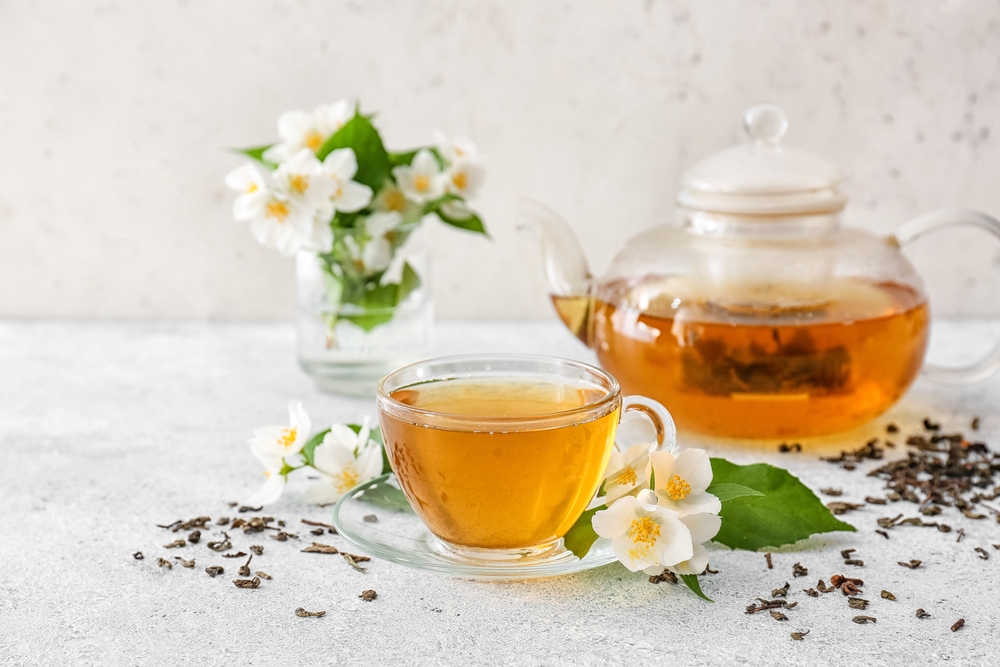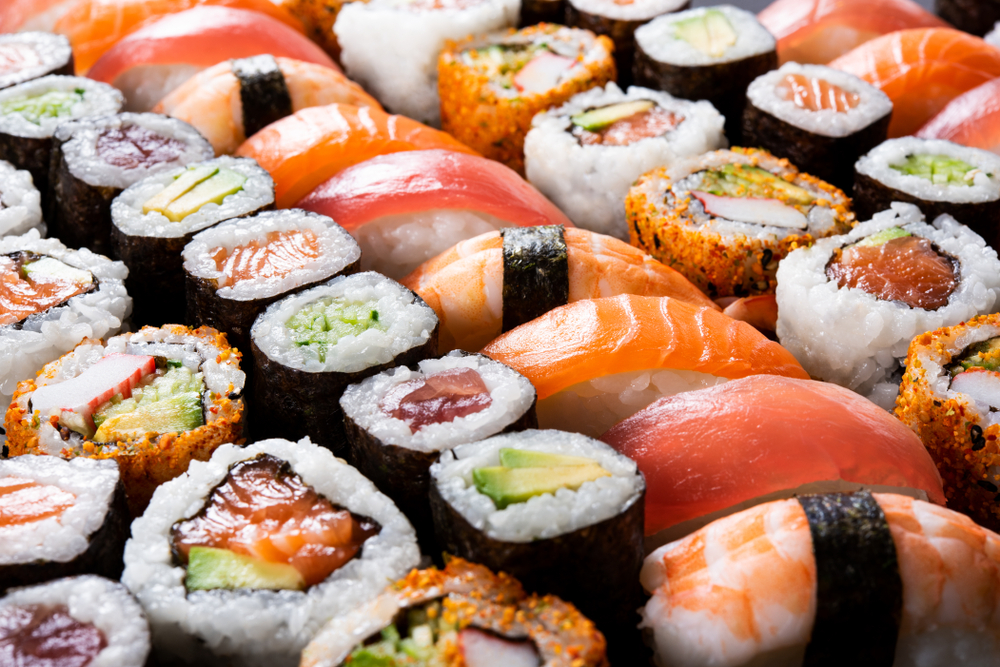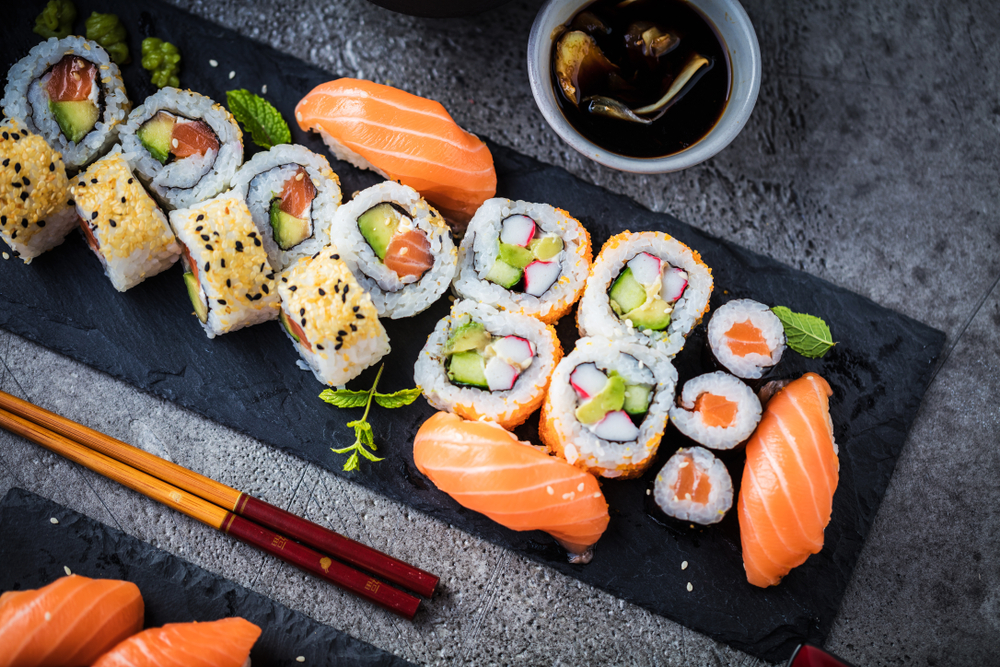If you’re someone who loves having sweet, gooey, and sticky rice in your regular meals, then you must be familiar with glutinous rice because it is quite popular in Asian countries.
Glutinous rice is mainly used for making desserts and sweets like puddings, dumplings, sweets, cakes, and wraps (papads). It has health benefits even with low nutritional value.
This makes it a good substitute for other grains or cereals that aren’t so filling.
Some substitutes for glutinous rice are jasmine rice, sushi rice, and cauliflower rice.
What Kind of Rice is Glutinous Rice?
Also known as sweet rice, glutinous rice is a variety of rice known for its sticky texture. This rice is consumed more than any other type of grain in Asia.
The word ‘glutinous’ actually refers to this texture as it refers to ‘something that is sticky’. As you cook this sweet rice, the grains absorb the moisture and start to clump together.
Despite its name, glutinous rice is actually gluten-free.
What Does Glutinous Rice Taste Like?
While the name glutinous rice refers to its texture, the other name obviously refers to its taste.
Glutinous rice has a very subtle sweetness, more so than other rice varieties.
Don’t be turned away, though. The sweetness is mild enough that it won’t overshadow any of the other flavors in your dish.

Cooking Glutinous Rice
This type of rice has a very specific cooking process.
Its sticky consistency makes it hard to separate the grains after being in boiling water or a hot oven.
Glutinous rice must be steamed, slow-cooked, or baked in a rice cooker to get the correct consistency.
Health Benefits
Sticky rice is low on the nutrient scale. There’s not much in the terms of fat, protein, fiber, and other minerals.
Even so, glutinous rice has health benefits like improved bone density, improved metabolism, anti-inflammatory properties, and heart benefits.
How is Glutinous Rice Different from Regular Rice?
Most rice varieties have two sources of starch: amylose and amylopectin.
Glutinous rice only possesses one of these components, amylopectin.
What makes glutinous rice so sticky compared to regular rice is its high starch content and low amylose content.
Once cooked, unlike other rice, glutinous rice can become hard again once it begins to cool down.
What Can I Use Instead of Glutinous Rice?
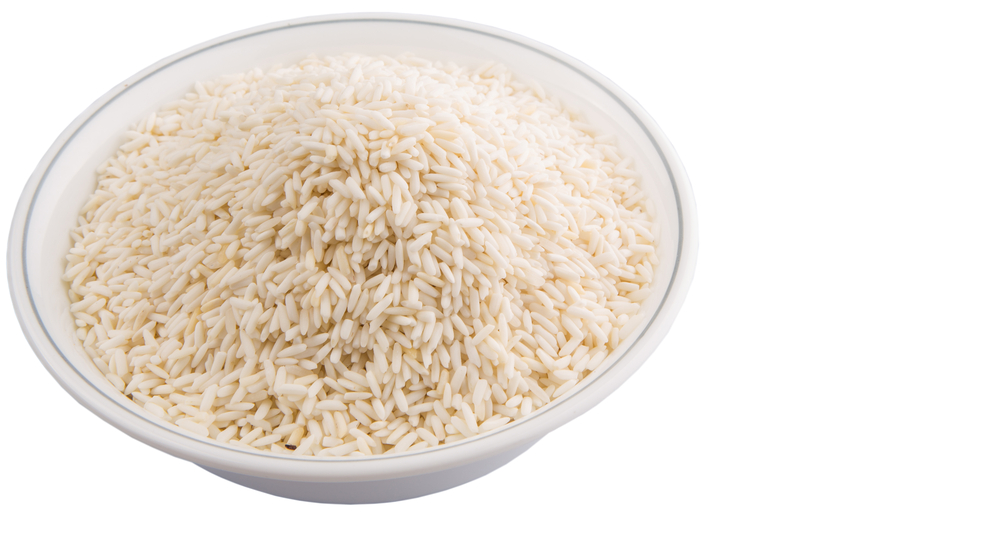
- Regular Rice
An inexpensive and easy-to-find alternative to glutinous rice would be regular rice.
While not as sticky and sweet, it can be cooked in a way that comes close to that texture without breaking the bank.
While you should always rinse your rice, don’t over-rinse it. It’s the starch content that makes your rice sticky and if you rinse it too much, you risk washing away those important starches.
To make sure your regular rice gets that sticky consistency you love, add more liquid. A couple of extra tablespoons should do the trick.
Bring to a simmer until all your water is absorbed. After the fluid is absorbed, cover and let it sit for another 10 minutes before serving. Cooking it this way will get you as close to the texture of glutinous rice as you can.
- Jasmine Rice
Jasmine rice is a long-grain rice that still gets a sticky texture when cooked. It may not be as sticky, but it’s close and jasmine rice has a mildly sweet flavor.
If it’s that sticky texture that you’re looking for, then jasmine rice is a great glutinous rice substitute in recipes like dumplings and fried rice.
Jasmine rice can get mushy when overcooked. To get that perfect sticky texture, cook jasmine rice over low heat that way the grains won’t break down. Low and slow is always best when it comes to sticky rice.
Not only is jasmine rice versatile enough to serve in many dishes, but it’s also an easy-to-find and affordable option in your local supermarket.
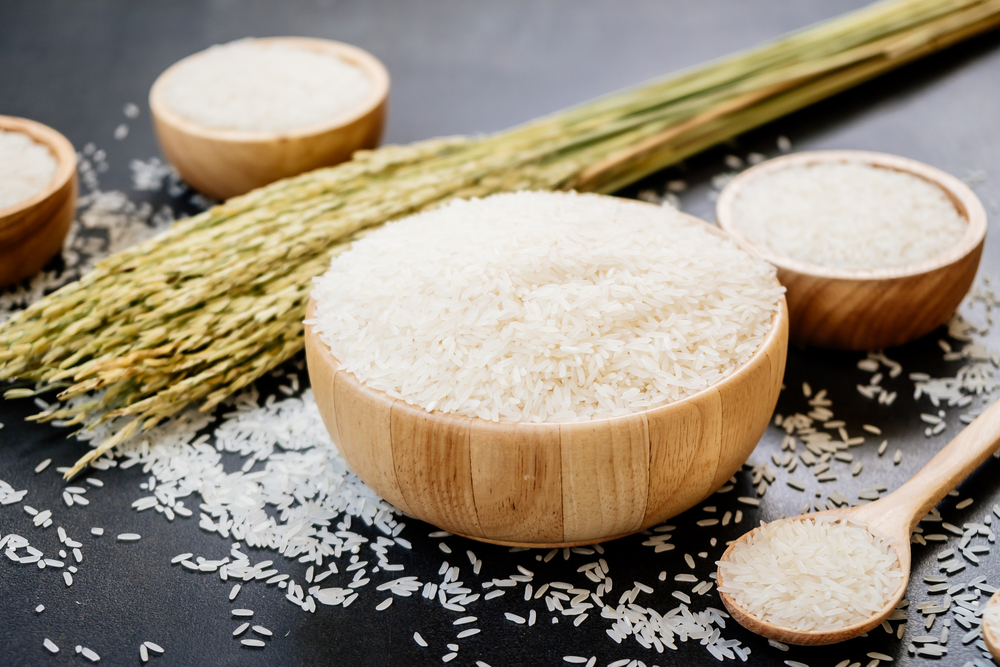
- Sushi Rice
Sushi rice is another small-grain rice with high starch content.
While not as sticky as glutinous rice due to its higher amounts of amylose, sushi rice still has that slightly sweet taste to match closer to other alternatives.
This rice is popular in sushi recipes because of its sticky nature after cooking. This similar texture and starch content make sushi rice an excellent glutinous rice substitute.
It is easy to overcook sushi rice and then it will lose its shape, unlike glutinous rice. It’s best to use sushi rice as a glutinous rice substitute in meat and seafood dishes that will allow the rice to incorporate the sauce.
- White Rice
A variety of white rice would make a decent substitute for glutinous rice in a pinch.
Missing its outer husk, white rice doesn’t get that sticky consistency when cooked like its brown counterpart. This missing husk also allows you to digest it more quickly.
However, this fluffy and light variety of rice will fill in those gaps in your meal even without the desired sticky texture.
White rice varieties that may work for you would be long-grain rice, Calrose, wild rice, basmati, and sticky medium-grain rice.
- Arborio Rice
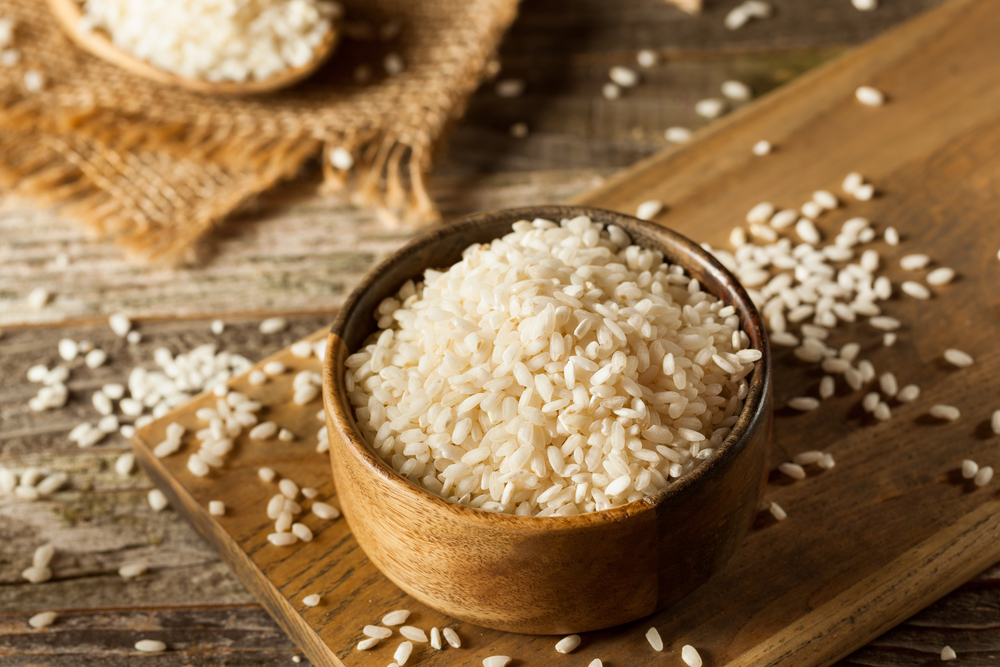
The main ingredient for Italian risotto, arborio rice is another high- rice that cooks up that sticky texture.
This versatile rice can be cooked with meats and seafood and gives that sticky, chewy texture very similar to glutinous rice.
Using the right amount of fluid and a low cooking temperature, this rice gets a soft texture without turning to mush.
- Cauliflower Rice
This popular low-carb rice substitute is an incredibly healthy alternative to glutinous rice.
Diced cauliflower packs a big punch of vitamin C, essential for immunity. Just one cup of raw cauliflower carries 77% of your daily vitamin C needs.
Cauliflower is also an excellent source of vitamin K. This vitamin is essential for proper blood coagulation.
In the end, it’s low-calorie and readily available in pre-packaged, pre-riced bags or unprocessed for you to make yourself.
- Broccoli Rice
Another healthier, low-carb glutinous rice substitute is broccoli rice.
With a one, two punch of vitamin C and calcium, broccoli rice is not only low-carb and low-calorie but also full of beneficial vitamins and nutrients that your body needs.
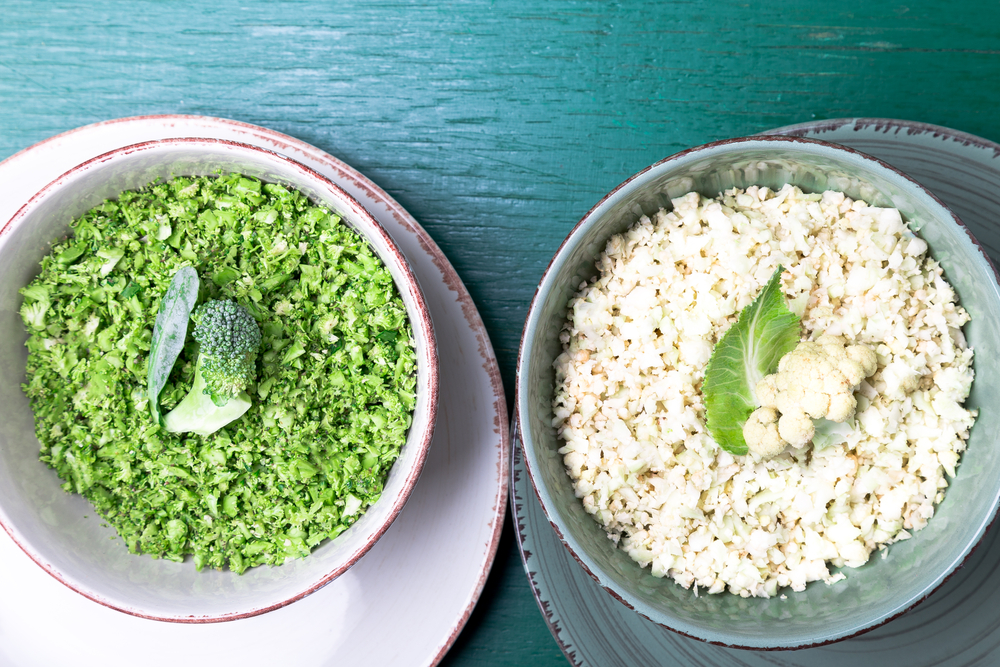
To make broccoli rice, chop the broccoli into small pieces and put them in a food processor. Pulse in the food processor until the pieces resemble the size of rice.
Broccoli is high in fiber. As such it’s a great substitute in stir-fry or in thicker sauces and high-liquid dishes.
- Butternut Squash Rice
If you’re looking for a low-carb substitute for glutinous rice, then you might want to try some of the other alternatives listed here. However, that doesn’t mean that butternut squash rice isn’t a good glutinous rice substitute.
While still higher in carbohydrates, butternut squash is still a healthy and tasty alternative.
Packed full of minerals like manganese, magnesium, and potassium, butternut squash is great for bone health and blood pressure.
Simply chop this squash into small pieces and pulse in the food processor. This squash will dice into rice-like pieces and make a healthy alternative to any rice.
- Rutabaga Rice
Most people that are looking for a rice substitute are looking for healthy diet alternatives, like low-carb options.
Rutabagas are a root vegetable that’s much lower in carbohydrates than the usual potato.
This root goes through a process to make it a rice substitute that has just 7.9 grams of net carbohydrates. When you compare that to your normal white rice, that’s not a bad substitute.
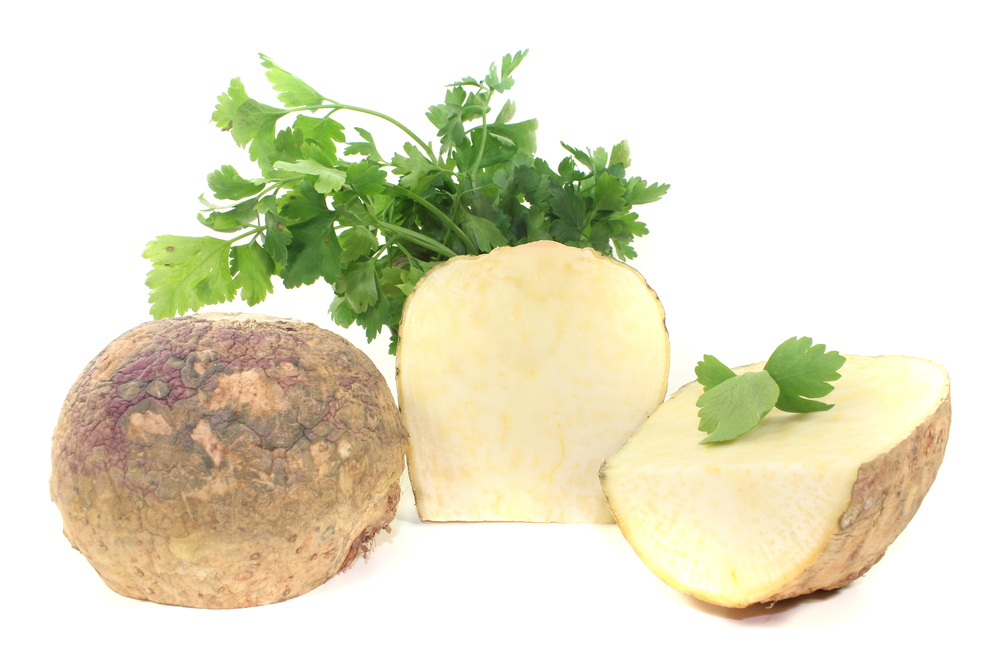
Carbohydrates aren’t the only winning factor. Rutabagas are full of vitamin C, manganese, and potassium helping with immunity, bone health, and blood pressure.
FAQs
Can a diabetic eat glutinous rice?
In moderation, yes. Glutinous rice may raise blood sugar levels and shouldn’t be consumed in large amounts by those individuals with blood sugar regulation issues.
Is glutinous rice difficult to digest?
Its high amounts of amylopectin make it difficult to digest. Its absorption and re-hardening qualities can cause digestion problems in many people and can make it sit in the stomach for some time. Whether it’s hard on your stomach or not really depends on how you’re eating it (hot or cold) and what you’re eating it with.
What tastes good on sticky rice?
- Steamed vegetables
- Coleslaw
- Grilled pork
- Green papaya salad
- Grilled chicken
- Fried pork
- Coconut milk drizzle
- Crushed peanuts
- Sesame seeds
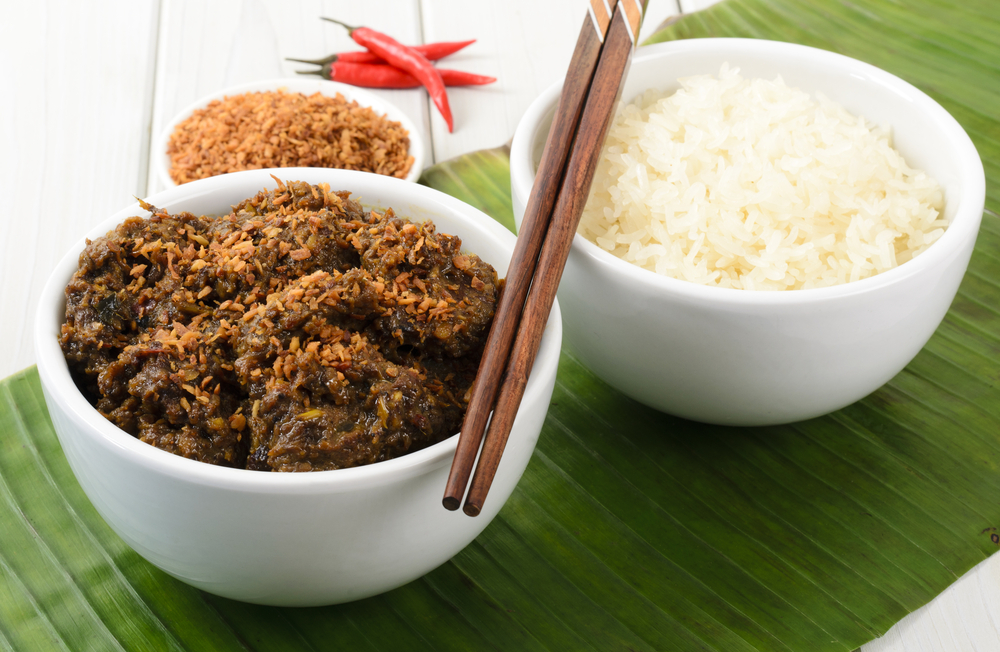
To End
Rice is one of the easiest foods to get wrong in your kitchen. It can be either too dry and hard or too sticky and gooey.
Instead of using the same rice every time you cook, try using different types of rice in different dishes.
Different types of rice offer different textures and flavors, so you can always mix up your meals by using one type of rice in a recipe and adding another type.
Rice is a very flexible starch, so there are an almost unlimited number of ways you can use it in your meals.
It doesn’t matter whether you prefer soft, fluffy white rice or hard, parboiled rice; you can find ri ce that works for you.
Glutinous rice is a type of rice that’s very popular around the world because of its texture, color, and taste. These qualities make it very versatile in different types of dishes.
If you can’t get your hands on glutinous rice or maybe want a healthier alternative, there are so many substitutes you can try.
You never know, you might discover your new favorite dish.


